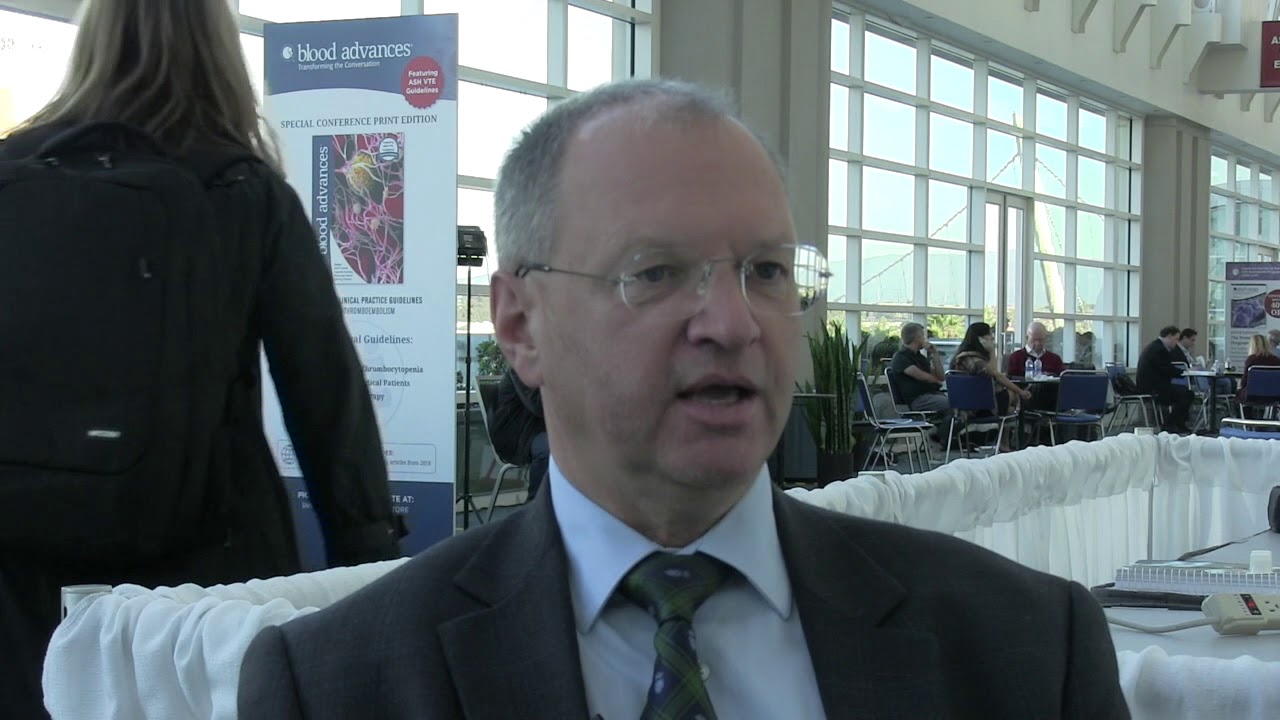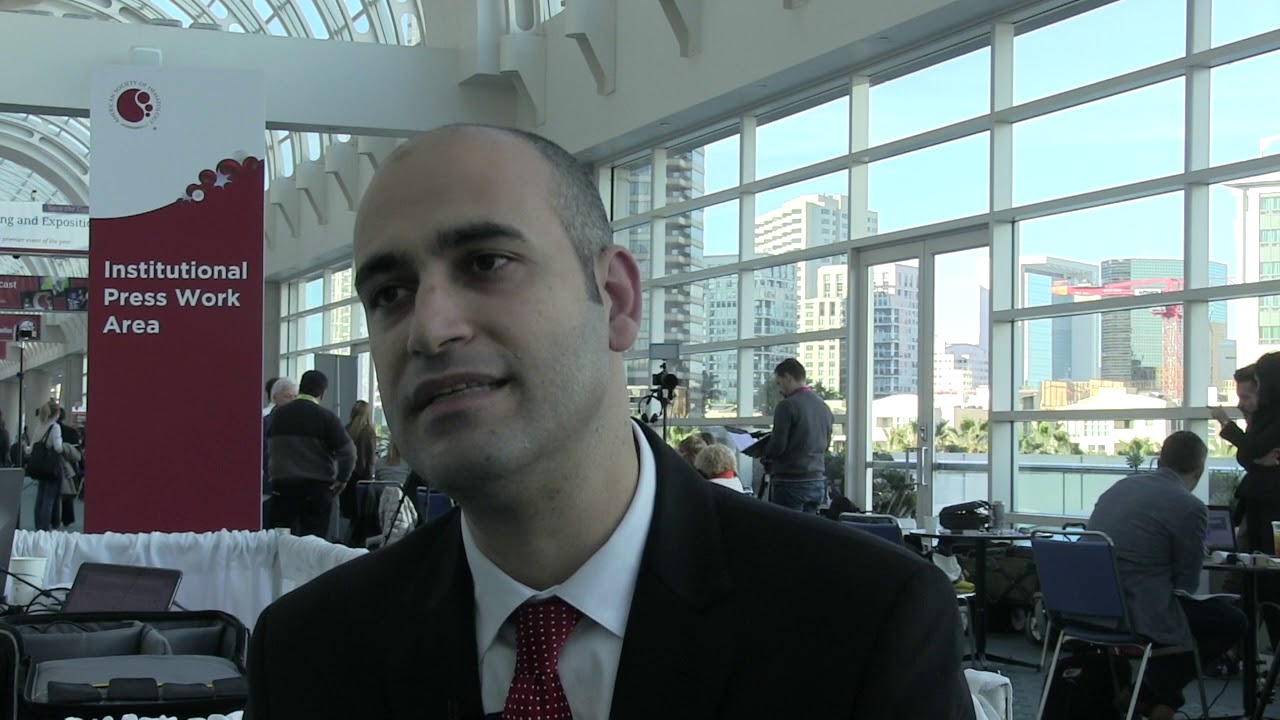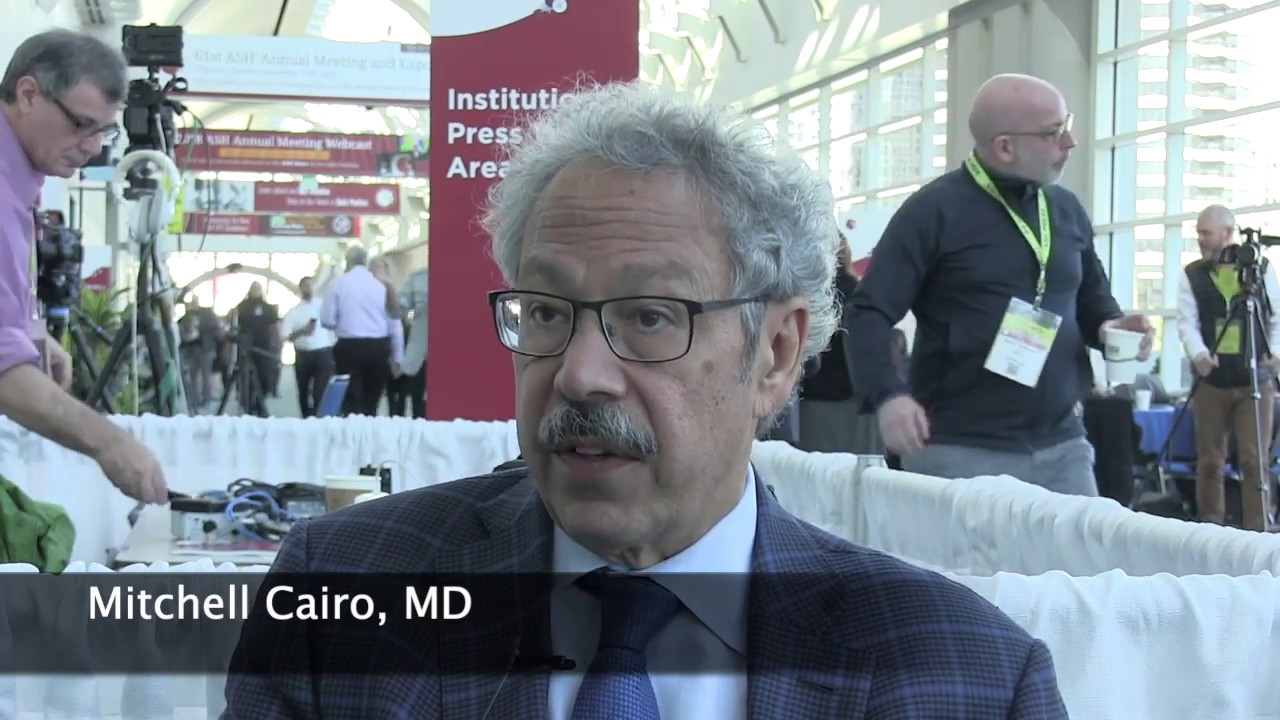Michael Hallek, MD, of University Hospital, Cologne, Germany, delivered the Ham-Wasserman Lecture, titled “On the Architecture of Translational Research Designed to Control Chronic Lymphocytic Leukemia,” at the 60th ASH Annual Meeting and Exposition.
Chronic lymphocytic leukemia (CLL) has been “one of the most dynamic fields of clinical research over the past 2 decades,” Hallek said during his presentation. For example, in 1988, a differential count and bone marrow biopsy would have been performed to confirm a CLL diagnosis, and treatment would have begun with chlorambucil and prednisone. In this scenario, the patient would have likely had a prognosis of about 2 to 3 years.
Three technological advances and improvements have critically contributed to progress in CLL: the progress of molecular genetics and molecular biology, the availability of reliable animal models, and the “tremendous increase” in the field’s understanding of the central pathways that regulate the development of B cells in their microenvironment, he said.
Several published studies have suggested a central role for B-cell receptor signaling, Hallek said. More recently, whole-exome sequencing of databases from large annotated clinical CLL databases has enabled a description of the genomic landscape of CLL.
“From these studies, we have learned that inflammatory pathways, B-cell receptor (BCR) signaling and differentiation, Notch signaling, Wnt signaling, DNA damage control, chromatin modification, and RNA and ribosomal processing are frequently altered in CLL,” Hallek said.
There are very few CLL cell lines available, “and their relevance is highly disputed because they often represent CLL variants with multiple genetic variations,” but the advent of reliable animal models has taught researchers that the interaction of CLL cells with their microenvironment “is essential for leukemogenesis,” Hallek said.
The field has also developed a better understanding of BCR signaling and its role in CLL cell survival.
“This is underscored by the observation that the mutational status of IGHV genes defines different forms of CLL and has prognostic impact,” he said.
Numerous studies on BCR signaling have undoubtedly contributed to the creation of novel therapeutics for CLL and other lymphoid malignancies. There is now a CLL International Prognostic Index that takes into account five key variables — TP53(17p), IGHV status, B2M (mg/L), clinical stage of disease, and age — to develop a prognostic score and delineate patients by risk group.
As newer therapies have been developed, the prognostic value of Rai or Binet stages has decreased, no longer truly differentiating intermediate from advanced stages, Hallek said. Biomarkers identified in the recent past are providing additional prognostic information, but “the plethora of genetic markers obtained by next-generation sequencing has not yet provided additional prognostic or predictive markers that are sufficiently validated, and these need to be further tested in clinical trials.”
However, prognostic scores and stratification systems have been proposed using these biomarkers, which can be “very useful” in identifying the high-risk patient populations for experimental protocols, as well as identifying those with a good prognosis even with advanced stages.
All of these advances have allowed researchers to develop more personalized, targeted therapeutic options for CLL. In less than 20 years, these improvements have “profoundly changed the management and the outcome of patients with this disease,” Hallek said.
CLL follows various patterns of clonal evolution, opening up the possibility to monitor the clonal composition of even single leukemia cells under selective pressure by novel therapeutic combinations. Clinical trials must continue to be both creative and systematic; both CLL1 and CLL17 protocols for early high-risk CLL suggest watch and wait remains the standard of care. CLL4 found a longer progression-free survival following fludarabine plus cyclophosphamide (FC) therapy compared with fludarabine alone, and improved efficacy can be seen with FC chemotherapy and rituximab.
“You can either cut the stem and eliminate the disease, or we can cut the branch and treat it,” he said. Research is moving incrementally toward cutting the stem, and Hallek believes potential future strategies are going to be “debulking (for 1-2 months), induction (for 6-12 months) and then MRD tailored maintenance (for at least 1 year).”
That same patient who was diagnosed in 1988? Today, “we’d use a differential count and immunophenotyping to confirm a CLL diagnosis. We’d do a comprehensive risk profiling. We’d start initial therapy with FCR (or venetoclax-obinutuzumab or ibrutinib), with several good options for second-line therapy,” Hallek said. But most importantly, that same patient now has a prognosis of 10 plus years, particularly if there is negative minimal residual disease.







 © 2025 Mashup Media, LLC, a Formedics Property. All Rights Reserved.
© 2025 Mashup Media, LLC, a Formedics Property. All Rights Reserved.